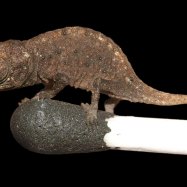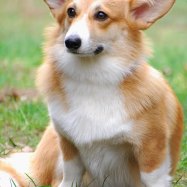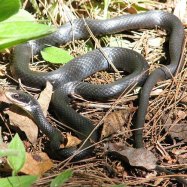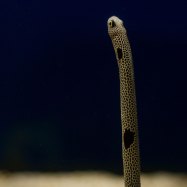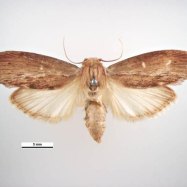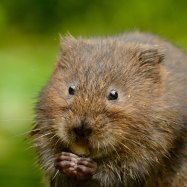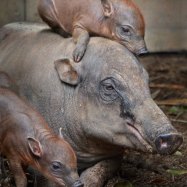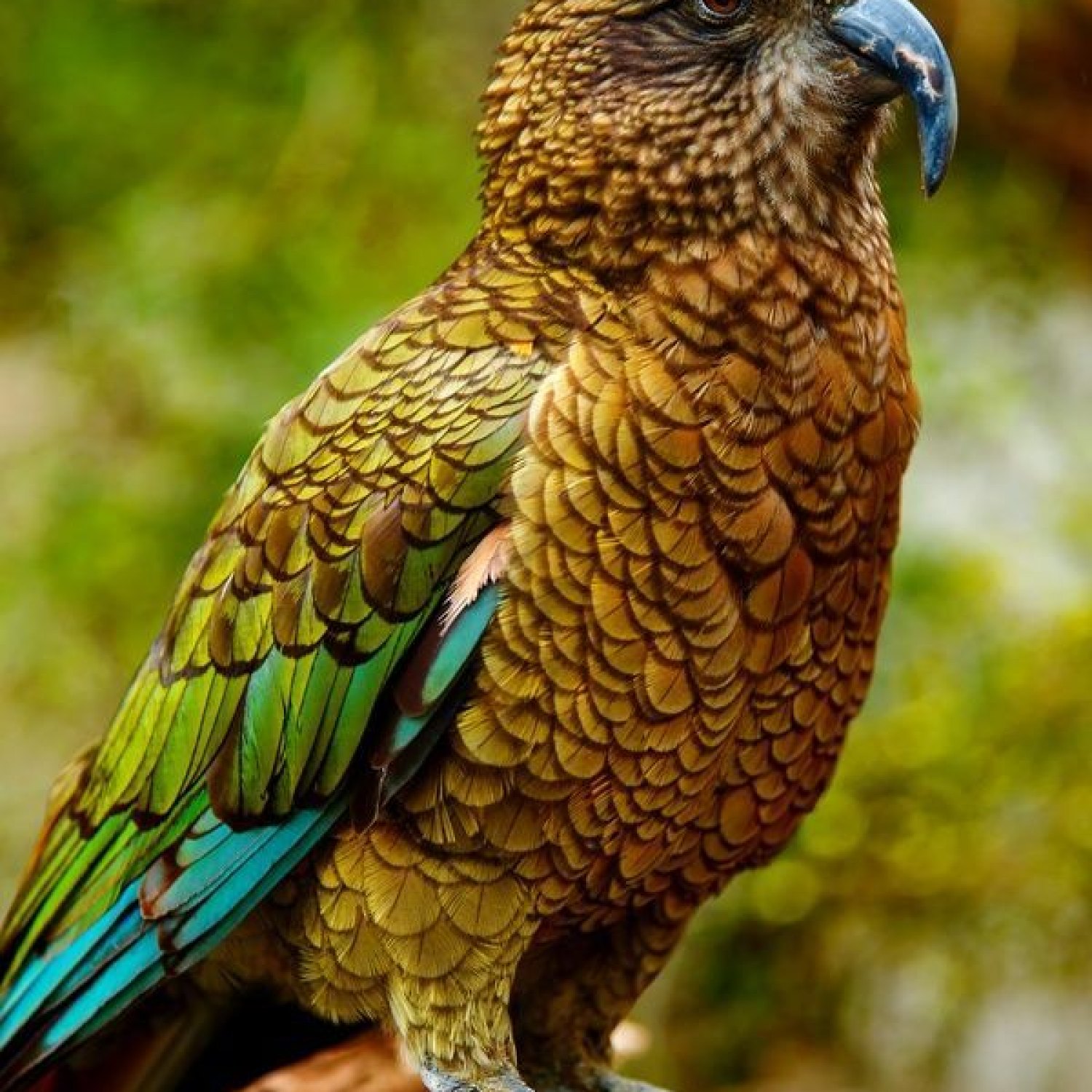
Kea
45-50 cm
The Kea, a large parrot found in alpine regions, is known for its curious and intelligent nature. This unique bird belongs to the Strigopidae family and can grow up to 45-50 cm in length. It is a must-see for nature enthusiasts and bird lovers alike. Keep an eye out for these colorful and lively creatures on your next trip to the alpine regions. #Kea #AlpineBirds #Strigopidae
Animal Details Summary:
Common Name: Kea
Kingdom: Animalia
Habitat: Mountainous regions
The Clever and Charismatic Kea: A Parrot like No Other
Imagine soaring high in the mountains, surrounded by breathtaking views, when suddenly you hear the unmistakable sound of a parrot squawking. You may be surprised, as parrots are usually found in warmer climates, but high up in the mountainous regions of New Zealand, you will encounter the fascinating creature known as the Kea.Scientifically known as Nestor notabilis, the Kea is a one-of-a-kind parrot that showcases intelligence, curiosity, and charm. These qualities have made them a beloved and sought-after species, drawing both local and international tourists to the alpine regions of New Zealand where they are found Kea.
Keas are a unique combination of beauty and brains, making them a top choice for researchers and enthusiasts alike. In this article, we will explore the captivating world of the Kea and discover what makes them stand out from other parrots.
The Kingdom of the Kea
As part of the classification process, all living things are grouped into different categories. The Kea belongs to the Kingdom Animalia, which means they are classified as animals. They are further classified under the phylum chordata, which includes all animals with a backbone and spinal cord.Aves, Psittaciformes, and Strigopidae – the Parrot Connection
What sets the Kea apart from other birds is its classification under class Aves, which includes all birds. This fact may seem straightforward, but it is worth noting as parrots are part of the Aves family, making the Kea a member of the parrot family as well.More specifically, the Kea belongs to the order Psittaciformes, which includes over 350 different species of parrots. And within this order, they are classified under the family Strigopidae, making them the only species in this family Kouprey.
Simply put, the Kea is a parrot in a class of its own.
A Unique Habitat and Geographical Distribution
As mentioned earlier, the Kea is found only in the mountainous regions of the South Island of New Zealand. This makes them a unique and iconic species, as they are the only parrot in the world that resides in an alpine environment.The rugged terrain and harsh climate of their habitat have forced the Kea to evolve and adapt to their surroundings. They have a remarkable ability to thrive in this challenging environment, showcasing their resilience and adaptability.
Today, Keas are protected under the Wildlife Act of New Zealand, and their numbers are slowly recovering after facing threats of extinction due to human activities.
The Body of a Parrot, the Color of the Mountains
The Kea has a distinct body shape, with a large build that is typical of most parrots. They measure around 45-50 cm in length, with a wingspan of approximately 100 cm.But what sets the Kea apart from other parrots is its coloration. Their feathers are a beautiful olive-green, which helps them blend in with their surroundings and camouflage from predators.
This coloration is unique to the Kea, as most parrots have bright and vibrant plumage. Their muted tones are a reflection of their habitat, and it adds to their allure as a mountain-dwelling species.
An Omnivorous Appetite
Like most parrots, Keas are omnivores, meaning they eat both plant and animal matter. This diet is essential for their survival as they are foragers, constantly on the lookout for food in their mountainous home.In the wild, Keas feed on a variety of fruits, berries, seeds, and vegetation. They also eat insects, worms, and small reptiles, making them a versatile species when it comes to their diet.
One interesting fact about the Kea's feeding habits is their preference for meat, which is not common among most parrots. They have been known to hunt and scavenge for food, often targeting sheep and other mammals in the alpine regions.
This behavior has often caused conflict between farmers and Keas, as they are perceived as a threat to livestock. However, recent research has shown that this behavior is a result of their intelligence and adaptability and not a cause for concern.
The Clever and Curious Kea
One of the most fascinating qualities of the Kea is their intelligence. They are known as problem-solvers, constantly using their wit and curiosity to figure out solutions and navigate through their environment.One of their most remarkable abilities is their aptitude for using tools. They have been observed using sticks and stones to forage and open food, showcasing their resourcefulness and problem-solving skills.
In captivity, Keas have been trained to solve puzzles and tasks, demonstrating their quick learning abilities and cognitive skills. This intelligence has made them a popular subject for scientific studies, shedding light on the cognitive abilities of birds.
Their curiosity is also a prominent feature of the Kea's personality. They are known for their playful nature, often engaging in activities and games with each other or even humans. Their lively antics have made them a favorite among tourists, with many flocking to encounter these curious creatures up close.
The Noteworthy Kea
The Kea is a creature of many talents and remarkable abilities. From their unique habitat and coloration to their intelligence and curiosity, they have captured the hearts and minds of those who have encountered them.But that's not all – the Kea has also been recognized and honored through various means, cementing their position as a treasured species in New Zealand and beyond.
In 2014, the Kea was named "New Zealand's bird of the year." This recognition was the result of a campaign led by the Kea Conservation Trust, aimed at raising awareness and support for this iconic species.
Apart from this, the Kea can be found on the New Zealand $10 note, showcasing their significance in the country's culture and history.
The Need for Conservation and Preservation
Despite the uniqueness and allure of the Kea, they are classified as a vulnerable species on the IUCN Red List. Over the years, their numbers have significantly declined due to habitat loss, hunting, and human interference.Today, efforts are being made to protect and preserve the Kea and their habitat. Organizations like the Kea Conservation Trust are working tirelessly to raise awareness, conduct research, and implement conservation measures to ensure the survival of this remarkable species.
Encounter the Kea – a Parrot like No Other
Encountering the Kea in their natural habitat is an experience like no other. It is an opportunity to witness their intelligence, beauty, and charm up close and to appreciate the unique qualities that make them stand out among other parrots.From their remarkable ability to thrive in extreme environments to their curious and playful nature, the Kea has captured the hearts of many. They are truly a parrot like no other, and their continued conservation and protection are vital to ensure their presence for future generations.
Do not miss the chance to encounter the clever and charismatic Kea on your next visit to New Zealand's mountainous regions. It will be an experience you will never forget.

Kea
Animal Details Kea - Scientific Name: Nestor notabilis
- Category: Animals K
- Scientific Name: Nestor notabilis
- Common Name: Kea
- Kingdom: Animalia
- Phylum: Chordata
- Class: Aves
- Order: Psittaciformes
- Family: Strigopidae
- Habitat: Mountainous regions
- Feeding Method: Omnivorous
- Geographical Distribution: South Island of New Zealand
- Country of Origin: New Zealand
- Location: Alpine regions
- Animal Coloration: Olive-green
- Body Shape: Large parrot
- Length: 45-50 cm
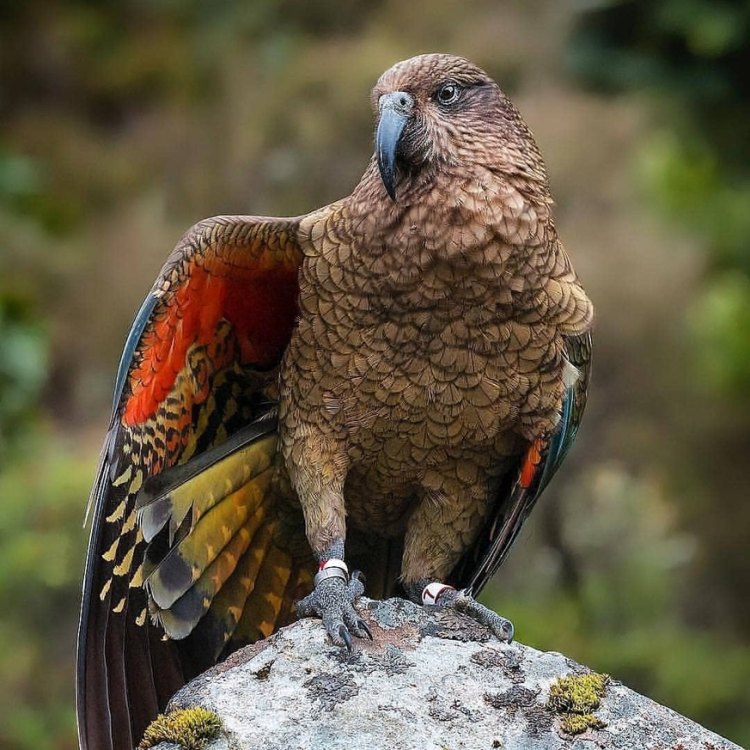
Kea
- Adult Size: Medium
- Average Lifespan: 15-20 years (in the wild)
- Reproduction: Monogamous
- Reproductive Behavior: Nest in tree cavities
- Sound or Call: Loud, harsh calls
- Migration Pattern: Altitudinal migration
- Social Groups: Form flocks
- Behavior: Curious and intelligent
- Threats: Predation, habitat loss, introduced predators
- Conservation Status: Endangered
- Impact on Ecosystem: Seed dispersers
- Human Use: Attracts tourists
- Distinctive Features: Orange feathers under wings
- Interesting Facts: Keas are known for their curiosity and problem-solving abilities.
- Predator: Introduced mammals such as stoats and cats
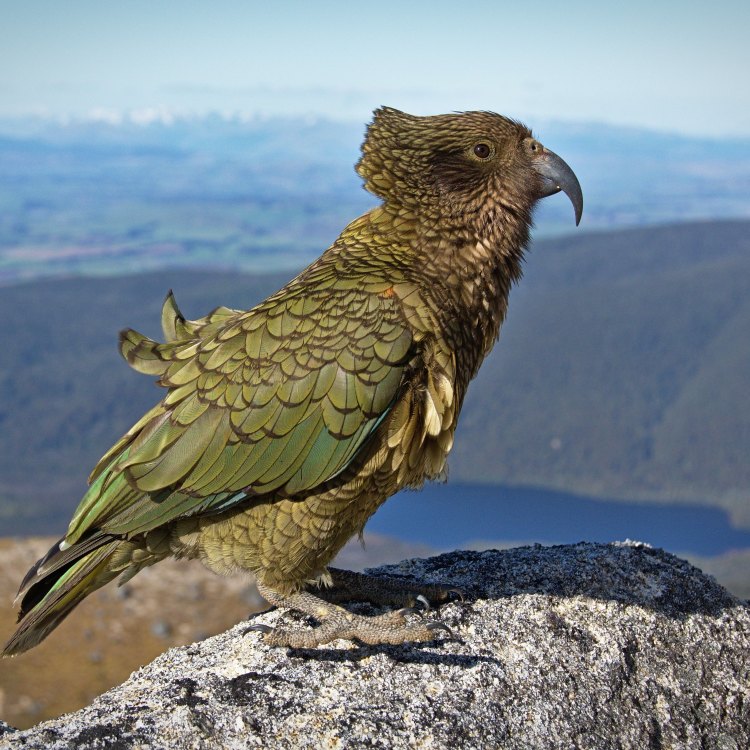
Nestor notabilis
The Intelligent and Endangered Kea: A Unique Parrot of New Zealand
When one thinks of parrots, the first thing that probably comes to mind is a colorful, tropical bird perched on a pirate's shoulder in a warm, sunny climate. However, there is one parrot species that stands out from the rest – the kea. This medium-sized parrot is not found in the tropical jungles, but in the mountains of New Zealand. With its distinctive orange feathers, curious nature, and impressive problem-solving abilities, the kea is a unique and endangered species that deserves our attention PeaceOfAnimals.Com.A Medium-Sized Parrot
The kea (Nestor notabilis) is a medium-sized parrot, growing up to 19 inches long and weighing about 2.5 pounds. They are the only alpine parrot in the world and are found exclusively in the South Island of New Zealand. Despite their average size, they are a powerful and agile bird, able to soar high in the mountains and navigate through rugged terrain.Average Lifespan and Reproductive Behavior
In the wild, keas have an average lifespan of 15 to 20 years. However, some have been known to live up to 50 years in captivity. These parrots reach sexual maturity around 3 to 5 years of age and typically mate for life, making them monogamous birds. During the breeding season, which lasts from July to January, keas are known for their loud, harsh calls that can be heard throughout their mountain habitat.They have unique reproductive behavior as well – nesting in tree cavities Kangaroo Rat. This is quite uncommon for parrots, as they usually nest in burrows or on the ground. This nesting behavior makes them vulnerable to predators, which is one of the many threats these remarkable birds face.
Masters of Altitudinal Migration
Another distinctive feature of keas is their altitudinal migration pattern. As the seasons change, they move from their higher summer habitat to lower elevations in the winter. They can be found at elevations of up to 6,500 feet during the summer and descend to around 1,500 feet in the winter. This allows them to avoid the harsh winter weather and access food sources at lower elevations.Curious and Intelligent Behavior
One of the most unique and fascinating aspects of keas is their behavior. They are incredibly curious birds and have been found to play with and investigate objects such as cars, tents, and backpacks. They have even been known to dismantle antennas and pull off wiper blades from cars, making them quite the mischievous birds.But their curiosity goes beyond being playful. Keas are also highly intelligent and have demonstrated impressive problem-solving abilities. In a study conducted by Dr. Amalia Bastos from the University of Auckland, keas were presented with a task involving a puzzle box with food rewards inside. The birds were able to solve the puzzle and access the food within a few minutes, showing their advanced cognitive skills.
Threats and Conservation Status
Sadly, despite their remarkable abilities and unique features, keas are facing multiple threats that have led to their endangered status. One of the biggest threats comes from introduced predators such as stoats, cats, and possums. These predators have decimated kea populations, as the birds have no natural defense against them.Habitat loss due to human development has also had a significant impact on keas. As their alpine habitat is transformed into human settlements, the birds are losing their homes and food sources. This further increases their vulnerability to predators and other threats.
The Importance of Keas in Ecosystems
The decline of keas not only affects the species itself but also has a significant impact on the ecosystem. Keas are important seed dispersers, as they have a specialized diet of fruits, leaves, insects, and seeds. The seeds they consume and scatter play a crucial role in maintaining the diversity and health of alpine plant communities.Without keas, the balance of native flora and fauna in the alpine environment is disrupted, leading to ecosystem degradation. This highlights the importance of protecting and conserving this unique parrot species, not just for their survival but also for the health of the ecosystems they inhabit.
The Human Connection
While keas face multiple threats, they also have a connection to humans that has both positive and negative impacts. On one hand, keas are known to attract tourists, particularly adventure seekers who come to see these curious birds in their natural habitat. This brings in a significant source of revenue for the local economy, which in turn helps fund conservation efforts for keas.On the other hand, human activity in the form of development and habitat destruction has had detrimental effects on keas. It is essential for humans to be aware of their impact on kea populations and take necessary measures to reduce these impacts.
An Orange Flash in the Mountains
In addition to their unique behaviors and impressive abilities, keas also have distinctive physical features. One such feature is the vibrant orange feathers that can be seen under their wings. These feathers are only visible when the birds are in flight, adding a beautiful pop of color to the mountain landscape.This bright orange flash has also helped researchers track and study keas in the wild. Scientists have been able to attach small, non-invasive orange tags on keas, making it easier to monitor and understand their movements and behaviors.
Fascinating Facts about Keas
Apart from their intelligence and curiosity, there are many other interesting facts about keas that make them stand out amongst other parrots. For instance, did you know that keas are the world's only species of alpine parrot? Or that they are classified as an endemic species, meaning they are found nowhere else in the world?Another fun fact about keas is that they are also known for their playfulness. In addition to interacting with objects, they have been observed sliding down snowbanks on their backs, reminiscent of penguins. This playful behavior is not just for fun but also serves as a way for keas to communicate and bond with each other.
Keas and Their Predators
While keas may be curious and intelligent, they are also facing threats from their predators. The main predators of keas include introduced mammals such as stoats and cats. These predators often target kea chicks, making breeding and raising offspring a risky venture for keas. This, along with other threats, has contributed to their endangered status.In Conclusion
As we reflect on the unique features and behaviors of the kea, it is clear that this endangered parrot species is truly one-of-a-kind. From their curious and playful nature to their impressive problem-solving abilities, keas have captured the hearts and minds of many. But with increased awareness and conservation efforts, we can help protect and preserve these fascinating birds for future generations to appreciate and admire.
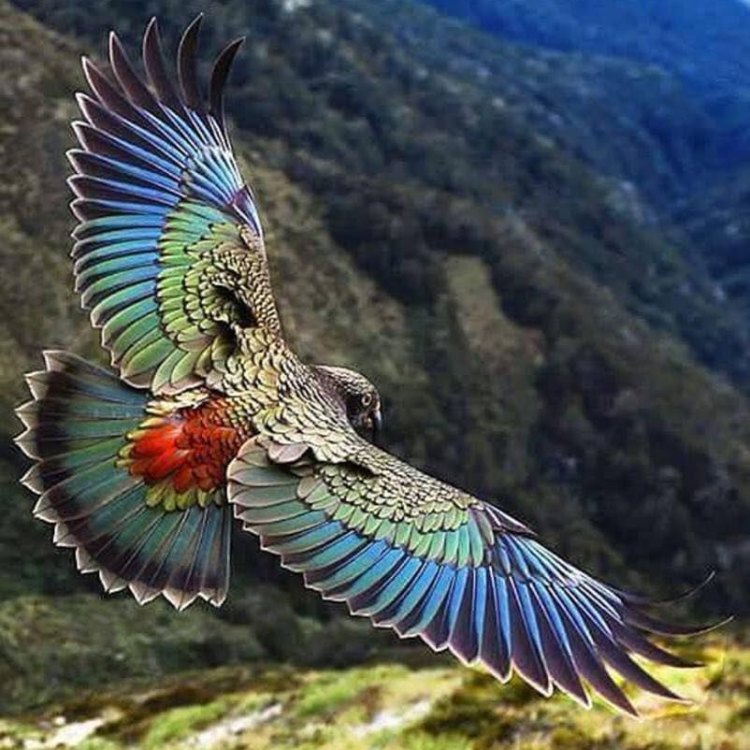
The Clever and Charismatic Kea: A Parrot like No Other
Disclaimer: The content provided is for informational purposes only. We cannot guarantee the accuracy of the information on this page 100%. All information provided here may change without prior notice.

